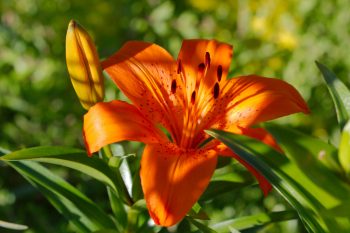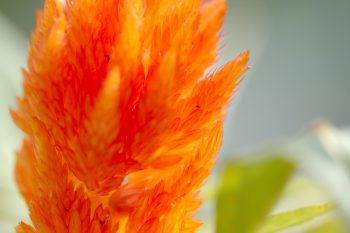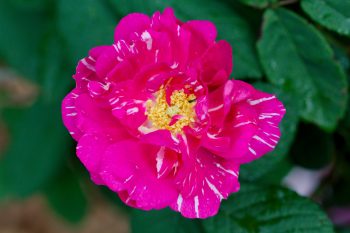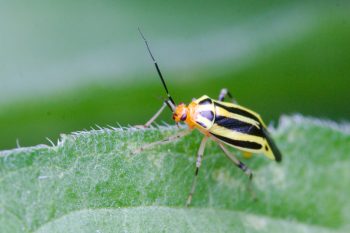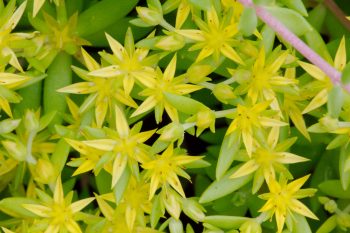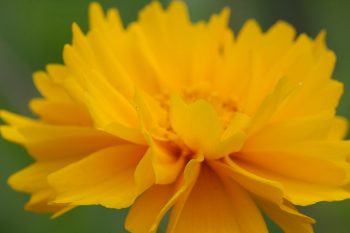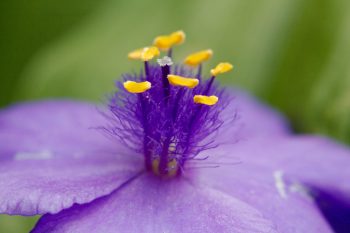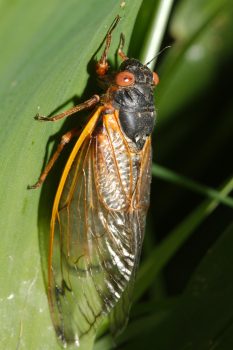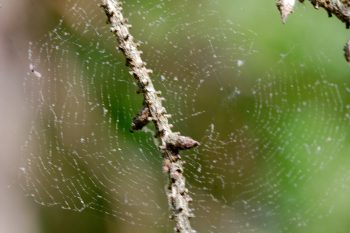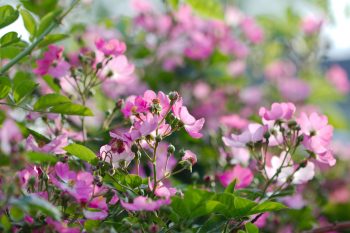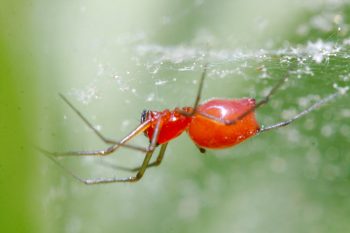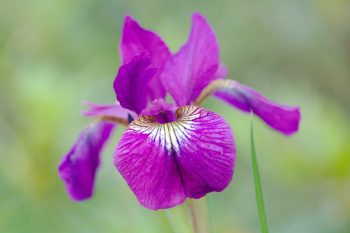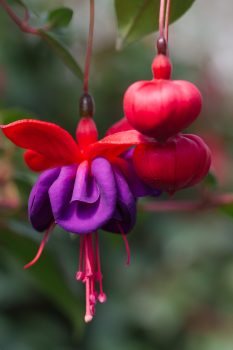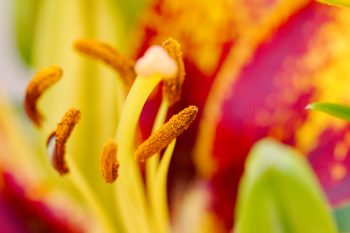This is the first of our Asiatic lilies to come into bloom. We have been adding these every now and then and I really love them. They have such loud, hot colors and are such beautiful, symmetrical flowers. I don’t know that I could ever have too many of them. I think my favorites are the solid colors, particularly the orange and deep reds but I saw a mix of orange and yellow the other day that was out of this world. This one is relatively short, with the flower less than a foot and a half from the ground. I like that because it means it’s easier to look down into the flower. The tiger lilies are much taller but since the flowers hang down, that works out really well.
Delaware Memorial Bridge
I covered a few miles today but ended up where I started. Cathy and I left the house at about 5:30 and drove to the airport. From there I flew to Boston, where I was picked up by Dorothy. Then we drove home. It’s about 460 miles by the route we took and the round-trip took me 12.5 hours including two hours waiting for my 56 minute (and $40!) flight. We crossed a couple large bridges, the George Washington Bridge from Manhattan to New Jersey and then the Delaware Memorial from New Jersey into Delaware. Dorothy was driving for most of the New Jersey portion of the trip and I was able to take a few pictures of the Delaware Memorial Bridge as we crossed it.
Cicada Wing
Because there are a lot of them about, I’m guessing that this is a wing from a Riley’s 13-year cicada (Magicicada tredecim) like the one whose picture I posted ten days ago (see: Saturday, May 20, 2017). I think it’s a beautiful thing. It’s also quite sturdy. This one was separated from its owner and has little droplets of water on it. Even handling it to get it into position for a photo didn’t dislodge them. Interestingly, the wings of the clanger cicada (Psaltoda claripennis, also known as the clear wing cicada), a species found in eastern Australia, has a physical structure of ‘nanopillars’ that kill bacteria that settle on them. Pretty cool.
Celosia
Cathy’s been stocking up on her annuals and has begun to put them into containers to go around the house. There are some amazing colors and textures and I thought for today I’d feature this Celosia. Its bright orange flowers are about as close to a flame as you can get and the genus name actually comes from the Greek word keleos (κήλεος) meaning burning.
Cathy has a couple with this flower color and one that is a deep, hot red. They really are something and bloom well in full sun and even light shade. I didn’t know this until recently but apparently it is edible and is cultivated as a leafy green vegetable. According to Wikipedia (caveat emptor, or in this case the eater), “It is traditional fare in the countries of Central and West Africa, and is one of the leading leafy green vegetables in Nigeria, where it is known as ‘soko yokoto’, meaning ‘make husbands fat and happy.’”
Kaien
We had the pleasure of baby sitting this little munchkin this evening while his parents went to a movie. Kaien (pronounced like Ryan with a K instead of an R, or simply Kai) is just over 5 months old now and really is starting to show a personality. He smiles a lot and thankfully is pretty easily distracted if he starts to fuss.
He slept for about an hour of the time we had him and then had a bottle, which was also pretty easy. After that we enjoyed singing to him. He especially loved Old MacDonald Had A Farm, especially the animal sounds that Cathy made. She sang quite a few verses, including some with animals that are not generally considered farm animals (do any farmers keep lions?). We also sang some songs by the Limeliters. Interestingly, their album Through Children’s Eyes was one that Cathy and I both listened to as children, so we both know the songs on it. Anyway, we sang a few songs from that. He mostly just stared at us throughout.
Rose ‘Mill’s Beauty’
On page 134 of volume 48 (dated August 24, 1895) of The Garden: An Illustrated Weekly Journal of Horticulture In All Its Branches, under the heading Rosa setigera, it says:
The numerous varieties in this group are at once specially distinguished by their leaves being rough to the touch, shining on the upper surface, downy and glaucous underneath, deeply toothed at the margin, and furnished with curved prickles on the mid-rib and principal veins. The flowers are borne, mostly in threes, in numerous corymb-like clusters.
It lists a few varieties and then under ‘Mill’s Beauty’ it has the following:
A very vigorous-growing and most noteworthy variety, producing a brilliant effect when its flowers, which are of a redder colour, but not so double as those of the preceding variety [R. s. var Beaute des Prairies], are in the full flush of their freshness. An extra fine kind.
This is a rare rose and in past years Nick, whose this one is, called it his ‘Great Unknown Setigera’ It has now been identified as the same rose growing in Roseraie du Val-de-Marne à l’Haÿ-les-roses in France. ‘Mill’s Beauty’ is also known as or ‘Miller’s Climber’ and is a R. setigera hybrid of somewhat unknown origin. According to volume 12 of Modern Roses it was bred before 1835 and may be a hybrid between R. setigera and R. arvensis. It also says that it is more likely of U.S. origin rather than the generally assumed England.
Poecilocapsus lineatus (Four-lined Plant Bug)
I don’t know that I’d call this a serious pest but it certainly does make our garden look worse this time of year. This little bug has been here in pretty good numbers in recent years and they suck the juices out of some of our plants, making their leaves brown and desiccated. It generally doesn’t do the plant irreparable harm but it doesn’t do it much good, either. In past years I spray them and cut them off before they do their worst. This year I never got around to it and the damage is pretty well done at this point. They’re pretty, little things, I admit. But pests, nonetheless.
Afghan Doll
We went to a presentation by a woman named Ariane from an organization that does work with some of the very poorest people in two areas in Afghanistan. Their work includes education, recreation, providing meals, and vocational training including such skills as sewing and baking. They are teaching sign language to deaf children, as well as ordinary school subjects. Cathy’s mom organized the event and had a combination of Afghan and French themed refreshments at the back of the room. She also brought in a few of her Afghan dolls and had them on display. On the tag attached to this one it says,
This is the national dress of the women of Afghanistan. The bodice is embroidered in many colors and sometimes includes colored stones, bangles, or small mirrors, depending on the area from which it comes. This costume has never been covered by the chadri.
Eastern Cottontail (Sylvilagus floridanus)
Rabbits. We’ve got rabbits. Eastern cottontail rabbits, to be precise (Sylvilagus floridanus). Apparently they have been multiplying like, well, rabbits. It’s not uncommon this spring to see four or five in the back yard at once. And there will be others in the front yard, as well. Mostly they are eating clover and not causing too much trouble with our garden so we put up with them. This many of them, though, and I’m starting to wonder how the local fox population is doing. Either there aren’t enough foxes to take care of the rabbits or they are simply not keeping up.
Sedum
We don’t remember where we first got this sedum or what it’s called but it’s very successful in containers and in the garden around our house. It doesn’t grow so fast or furiously that it’s a real problem but it certainly takes no effort to keep it alive. If you want something that will grown pretty much anywhere in your yard, this might be a good choice. It has very beautiful, little yellow, star-shaped flowers on light green foliage. We have it in full sun and in reasonably heavy shade. It places that are almost always wet and others that pretty much bake. If you want a little, let us know.
Coreopsis
This is a very nice Coreopsis (tickseed) growing in a container on our back patio. I like these larger-petaled Coreopsis flowers more than the fine-petaled varieties. I suppose they both have their uses but these are so much bolder and brighter. They certainly make a good show and outside the kitchen door is a nice place for a big splash of yellow. These are reliable blooms and come ahead of the sea of black-eyed Susans that fill our backyard later in the summer. For now, these are the sole source of this color in our garden (there are a few yellow irises but they are a much paler yellow).
Tradescantia virginiana (Spiderwort)
Spiderwort (Tradescantia virginiana) is one of my favorite perennials. It’s easy to grow, it does well in sun or shade, it can take fairly dry conditions, and it blooms for a nice, long while. We have one with leaves that are very pale green, almost yellow. We have one with flowers that are much more pink and some that are nearly pure, deep blue. Each bloom lasts for a day only but there are a lot of them, following one after the other.
From the Missouri Botanical Garden page:
Genus name honors John Tradescant (1570-1638) and his son John Tradescant (1608-1662), botanists and successive gardeners to Charles I of England.
Specific epithet means of Virginia.
When the stems of spiderworts are cut, a viscous stem secretion is released which becomes threadlike and silky upon hardening (like a spider’s web), hence the common name.
Magicicada tredecim (Riley’s 13-year Cicada)
In yesterday’s post I mentioned that this is not the year for the huge brood of 17-year cicadas. I also said that there were, nevertheless, a noticeable number of cicadas about, mostly obvious from their exuviae (their shed exoskeletons) on small plants all around the yard. Well, I got a pretty good picture of an adult cicada today and I’m pretty sure this is a Riley’s 13-year cicada (Magicicada tredecim). It is identified as a periodical cicada by its red or orange eyes (the annual cicadas have black eyes). The orange patch between the eye and the wing identifies it as Magicicada tredecim.
The last time we had the huge brood of 17 year cicadas was in 2004. Well, that was 13 years ago. That means that this admittedly smaller brood of 13-year cicadas happened to coincide with that larger brood, making 2004 an especially huge event, more than either of them would be on their own. So, in four more years, the 17-year cicadas shouldn’t be as bad as they were in 2004. That’s good to know.
By the way, if you are of a mind to try one, they don’t taste like much. Just saying.
Small Spider Web
I went out into the yard after work today and took some pictures. I started with some yellow irises that have started to bloom. From there I moved on to take a few rose pictures, the multiflora rose, ‘Blush Noisette’, and my newest, ‘Cutie Pie’. The cicadas are out in significant numbers. This isn’t the year of the largest local brood, which isn’t due until 2021. But there are still quite a few of them. Finally, I took some pictures of this small spider web in the dying Colorado spruce in our front yard. It’s not as sharp as I would have liked, having been taken in somewhat dim light and without the aid of a tripod (and the branch was moving a bit int he breeze.
Great Blue Heron (Ardea herodias)
I went out into the woods next to my building late this morning. There wasn’t a lot that I found interesting but I took a few pictures. Before I went back inside, though, I thought I’d walk over to the pond on the other side of the building and see if the ducklings were still there. They were not but this great blue heron (Ardea herodias) was and I was able to get a few decent pictures before he flew off. I also watched a couple tiger swallowtails (Papilio glaucus) fluttering around and getting water from the mud at the pond’s edge. All in all, a nice, relaxing outing to break up an otherwise uneventful day at the office.
Rosa multiflora
My pink multiflora rose is in full bloom. I suspect it isn’t 100% R. multiflora, because those have white flowers and this is clearly not white. What the rest of its genetic makeup is, I really couldn’t say. R. virginiana would be a reasonable guess. The color is right. The leaves are definitely R. multiflora and it’s got the requisite resistance to black spot. It’s possibly a bit less vigorous, but that’s probably something in its favor. R. multiflora will generally take over and this is large, but fairly well behaved. Pity it only blooms once, but then, the same can be said for the azaleas.
Dwarf Spider
I know, I know. There are those among you who would be happier if I would just stop taking pictures of spiders all together. I’m sorry, but I think they are fascinating and beautiful creatures and I don’t see myself stopping any time soon. This one, which I think is a dwarf spider (subfamily Erigoninae), is quite safe to be around. Her body is probably 3 to 4 mm long and her jaws are not likely strong enough even to break your skin. So, no problems here. And don’t forget what spiders eat. If you don’t like flying insects, then spiders are your friend. I get not wanting them all around in your house but in the garden, please let them be.
Siberian Iris ‘Eric The Red’
This little Siberian iris was originally planted in our garden in Gaithersburg. When we were getting ready to move I dug up a portion of it and brought it with us. It’s been doing pretty well in our yard here for ten years. Like most Siberian irises and despite being named ‘Eric The Red’, this flower is purple rather than anything you could describe as red. Some Siberian irises are much bluer, of course, so it has more red in it than those. But it’s purple, not red. Still, it’s a happy little flower and quite content without needing much of any care to do well. In a bit more sun we’d probably get more flowers but it’s happy where it is.
Fuchsia ‘Dark Eyes’
Today is Mother’s Day. For many people that means buying cut flowers and taking their wife or mother out to lunch. For us it means a trip to the garden center. This is our third trip in two weeks and we now have enough plants to keep us busy for a little while. Mostly we buy annuals that Cathy will put into containers, including some at her mother’s house. On the two previous trips I bought a shrub each time but I didn’t get anything for myself this time (it’s Mother’s Day, after all). But I did bring my camera and while Cathy made up her mind what to buy, I took pictures.
They had quite a few Fuchsias in hanging baskets. Most of them were this variety, called ‘Dark Eyes’. There was another that had a white part instead of the purple here. I prefer this one over that. There were also a lot of really lovely gazanias and dahlias, which are always quite impressive. They have a few trees and one, a Japanese snowbell (Styrax japonica) was in full, glorious bloom. That’s a tree I should consider for our yard. Very lovely.
Asiatic Lily ‘Tiny Sensation’
Cathy and I went to Stadler Nursery this afternoon and while Cathy picked out a few perennials, I took a bunch of pictures. Actually, I bought something, as well, a Camellia japonica ‘Kumasaka’. I’m not sure where I’ll plant it but I’m thinking that it might go in front of the house to replace the dogwood that’s much too close to the house and really needs to come out. This photo is of an Asiatic lily called ‘Tiny Sensation’ and it’s a stunner. We have a few Asiatics in the yard and in containers. They mostly have solid colored blooms but all are quite hot.

